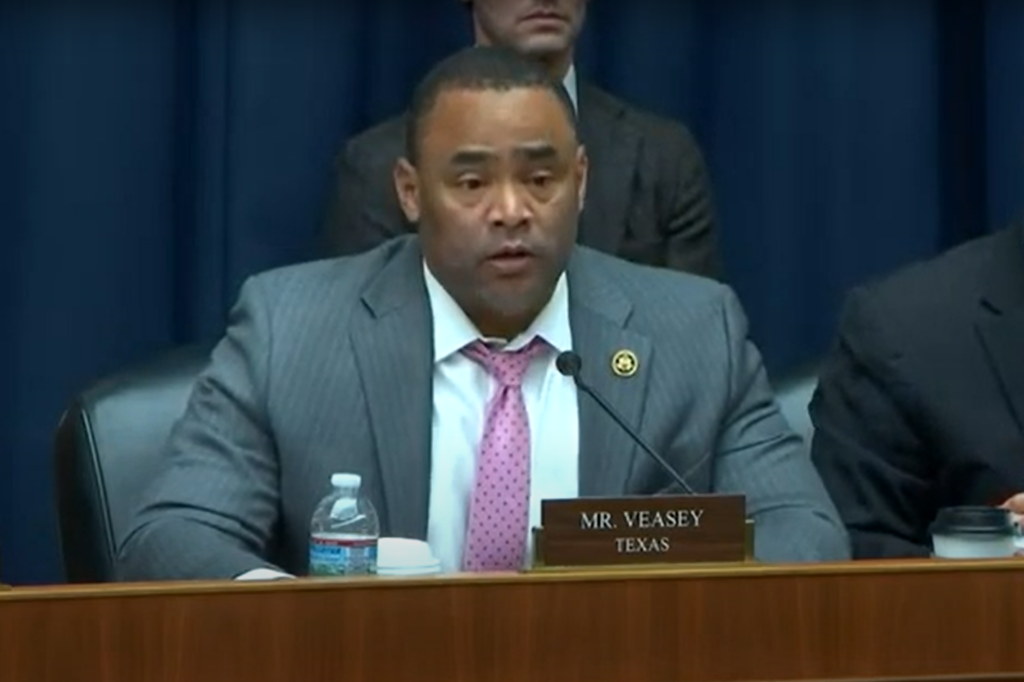In his new book, Bloc by Bloc: How to Build a Global Enterprise for the New Regional Order, CLTC Faculty Director Steven Weber explains how economic geography is evolving—and the consequences for global organizations in the post financial crisis world. Weber’s book puts forward a new model for global organization that meshes with developments in technology and governance heading into the 2020s. He argues that the global political economy is decomposing into regional systems that are more densely linked internally and much more loosely linked to each other. But the new regions are not defined by familiar physical boundaries like mountains and oceans. They are defined by technology rules and standards, which means we need to re-envision a region as a logical not physical space, with no need for geographic contiguity. We spoke with Steve Weber to hear more about the book—and the implications for how companies think about digital security. (Note that questions and answers have been edited for length and content.)
What motivated you to write this book?
I started thinking about this book when I realized that the question of where things happen in the world is still a really important one. In the internet world, people sometimes say anybody can be anywhere, but everybody still has to be somewhere. I needed to understand how economic geography was changing in an era where people sometimes believe that, because the internet was everywhere and nowhere at the same time, economic processes could be the same. I argue in the book that that’s actually not the case, that economic geography is alive again, but it’s going to look really, really different than what we became used to at the end of the 20th century.
How do you define economic geography?
Economic geography is a term that people use to describe where and why things locate where they do, where particular kinds of economic processes locate, where things get made, where factories get sited, where data is kept—and more importantly, why things end up where they do.
So what has changed over the past decade?
If you were a leader of a multinational organization and she asked a really simple question about, for example, where her employees should live, where her data should be stored, or where the legal foundation for her company’s intellectual property should be located, ten or fifteen years ago, we had answers to those questions, and the answer was, it’s global. Everything should aspire to be global. That’s what we called globalization. That’s what IBM called the globally integrated enterprise, an organization where geography didn’t matter anymore.
Today, answering those questions is anything but simple, and we need a new model of economic geography to try to explain to people why it is that different kinds of economic processes locate where they do—none more important than robotics, data, IP, intellectual property and people.
We need a new model of economic geography to try to explain to people why it is that different kinds of economic processes locate where they do—none more important than robotics, data, IP, intellectual property and people.
How does the book tell this story?
First, it goes backwards to look at the principles of economic geography that defined economic activity back in the 17th and 18th centuries, when organizations like the British East India Company were also trying to reach the world, just in a very different technological time.
The book tries to connect three points of a triangle together in answering the core questions of economic geography: the state, i.e., what policies governments enact that try to locate economic processes on their own territory; the technology that enables things to move from one place to another, or sometimes sets boundaries so that things can’t move from one place to another; and finally, and I think most interestingly, the ideas that people have in their heads about how to bring the state and technology together to figure out what the right organizational form is to reach the world in whatever area you happen to be living.
What would be an example of this model?
A very concrete example of a company that needs to think a lot about economic geography is Apple. If you look at the packaging of an Apple product, it will always say “Designed in California.” But what it doesn’t say is where it was manufactured or where the software was written, and that’s a model that made sense for the era of the globally integrated enterprise. It was designed in one place, built in another place, and they can ship products all around the world. The configuration of politics and technology that enabled that to happen is something we called globalization. And the book argues that that era of globalization came to an end, not because of trade arguments or populism in the United States and other parts of the world, but in the immediate wake of the financial crisis, between 2008-2009.
The irony is, it was just about a year before the financial crisis that the template for how to organize a global enterprise was clearly articulated in an article called “The Globally Integrated Enterprise” by Sam Palmisano, who was the CEO of IBM at the time. In a weird way, it’s like we figured out how to do it for a period of time just at the moment at which that period of time came to an end. For me, there’s a very personal element to this. I was doing work with the IBM strategy team in the early 2000s to help them figure out how to organize their global enterprise on that landscape. And I think we got it right exactly at the moment at which the landscape was changing so fast that it was wrong.
In a weird way, many organizations are only now just catching up to thinking about that global template. But that’s last generation’s template. And what they need is a new model, and that’s what the book tries to suggest.
What are the defining features of the new model?
To be an organization that can reach the globe on this new landscape is actually going to mean setting up several full copies that essentially operate on their own within a region. I need to explain what I mean by “region.” For thousands of years, we’ve thought of things like oceans and other physical geographic boundaries that make it hard to move people and things across physical space, but the internet makes that irrelevant. The regions that I’m talking about are actually defined now by technological standards and rules, rules about where you can move data, about the security requirements of privacy and the other ways in which firms can handle data.
They would be called “logical regions”—as in, defined by technology standards. And that’s going to be a really hard concept for maps to illustrate. Just imagine a map in which the boundaries are drawn according to technology standards. It’s a map that we don’t quite know how to see in our minds, but it’s a map that every corporate decision-maker is going to have to figure out how to operate on if he or she wants her corporation to reach the globe over the next decade.
What are the implications of this new model for cybersecurity?
Data security is obviously one of the key components of what’s going to make a competitive global organization. But data security means very different things if your data is stored at home, if your data is stored in the cloud, or if your data is stored on a server that is physically located in a political region that has certain rules, for example, about what law enforcement can and can’t do when it comes to subpoenaing or looking at that data.
Chinese cybersecurity laws are very different than American cybersecurity laws. European privacy regulations are going to be very different than either Chinese or American privacy regulations. And those rules define what it means to move data across a border. Data can move across mountains. Data can move across rivers. But it can’t move seamlessly across political regulatory boundaries, which are now the things that are going to define regions going forward.
Data can move across mountains. Data can move across rivers. But it can’t move seamlessly across political regulatory boundaries, which are now the things that are going to define regions going forward.
I like to use the analogy of airports. If you go to San Francisco airport and go through security, there’s one security area and the rules are the same for everybody. If you’re in Frankfurt , it’s a little different: there is one security check for everybody, but if you’re going to board a plane that’s going to the United States, you have to go through another screening at the gate that has slightly different rules and regulations. And if you go to Singapore airport, there’s not a single security line that everybody goes through, but there’s a decentralized security system that screens baggage differently at every gate, and you can reconfigure those distributed security sensors over time when the regulations or the rules or the requirements change.
If you use that analogy and think about data security, we’re moving from a world that’s like the San Francisco Airport to a world that’s a lot more like the airport in Singapore, where individual gates are going to have their own security requirements that are going to be reconfigured on a regular basis.
It’s going to make that flow of data much less global and much more specific and precise, and it’s going to have to change over time, sometimes dramatically, in one direction in one place and in another direction in another place. That’s a very different architecture for data mobilization than most global companies currently think about.
What are the key points you hope people take away from the book?
I hope people will take away that this new form of global organization is going to be really good for today’s kind of superstar data firms, but it’s going to be really challenging for companies and for countries that haven’t yet found their foothold in the modern, data-enabled, machine-learning economy. If you think about a country that is trying to develop its own economic development model to reach the pinnacle of economic growth, 30 years ago, we knew how to do that. We had a very clear model about low-wage manufacturing, building factories, finding ways to increase the value-add over time, and climbing an economic ladder toward developed economy status.
A machine-learning economy doesn’t work like that. And for countries that are already behind in that race, there’s no clear model about how to catch up. They’re going to have to figure that out over the next decade, and actually the leaders are going to have to help them figure that out. Otherwise we’re going to be dealing with some very significant security consequences for countries and companies that see no path toward competitive balance with the leaders in the machine-learning economy.
I wrote the book mainly for readers and the business and the nonprofit or philanthropy world, people who are running organizations that are located someplace but that aspire to reach the world as globalizing organizations have done ever since really the 1400s. But I think the book also has really important implications for government policy makers who are making the rules that shape the landscape on which all those things happen. I talk a fair amount about the kind of traditional national security implications for governments of a world where economic, geography, and physical geography are really not aligned with each other anymore—where, for example, the technology-defined regions that I talk about grind against the physical regions that still define militaries, still define security relationships, and still define the ways in which governments interact with each other.
What are the implications for traditional industries like the car industry?
Think about the auto industry as it used to be and the auto industry at is it is going to be. The auto industry was a great example of an industry or a sector that had gone global in the 1970s through the early 2000s, such that imported cars became something that nobody questioned anymore. It was obvious that a car was made up of parts that had been pulled together from factories all over the world. It didn’t matter where that car was made. It was just a car.
Now let’s rocket forward to today and 10 years from now: does anyone now really believe that a Chinese autonomous vehicle, essentially a computer on wheels that is taking data from sensors or radar all along the vehicle and sending that data back to servers located in China, is going to be allowed to drive on American roads? Or that an American vehicle doing exactly the same thing is going to be allowed to transmit all that data back to servers that are owned and controlled by companies that operate under American law? That’s what’s really happening in the decoupling of global supply chains.
It’s all about the data standards that are drawing the new boundaries of regions which are defining the next phase of global economic geography.
What advice would you have for organizational leaders trying to navigate this new landscape?
At the end of the book, I tried to summarize what I think the key lessons are for leaders who are trying to figure out how to navigate this new landscape over the next decade.
There are five points to think about: 1) People are going to have to keep their robots close to home in order to protect their intellectual property. 2) People are going to have to keep their data close to their chest in order to enable a kind of vertical integration that keeps the data and the customer in the hands of organizations that can make the most of that data, even though in some sense it can escape on its own. 3) People are going to have to keep their capital expenditures under control because they’re going to have to ride out periods of economic volatility. They’re going to be far more substantial than we’ve become used to over the last 10 years. 4) People are going to have to keep their job creation in the spotlight because it’sgoing to be the distribution of jobs and employment that is going to create social license to operate for firms. And finally, 5) We’re all gonna have to keep our fingers crossed for a kind of minimal level of global security cooperation that is going to keep politics stable enough to allow organizations to actually cross those data-defined boundaries when they can do so.
It’s not the best world that you can imagine if you grew up thinking that globalization was going to be the landscape you’re going to have to navigate, but for people to understand that reality, there’s a lot that can be done to make the world a better place than it is.




